Notorious for its four-seasons-in-a-day weather, Patagonia is a region where the answer to “when is the best time to visit?” goes beyond simply identifying the warmest months. Patagonia is vast, touching both the Atlantic and Pacific coasts and spanning fjords, desert steppe, temperate rainforest, and the Andes mountains (and their fickle high-altitude climate.) With weather that’s apt to change quickly, microclimates, winds, and 14 degrees of latitude, there is no single best time to visit Patagonia. Instead, we can consider the upsides of traveling during each season—which may have nothing to do with the weather.
When is the best time to visit Patagonia?
Unless you’re traveling for winter sports, Extraordinary Journeys South America specialists recommend visiting Patagonia in spring, summer, and fall. Summer (December, January, and February) is predictably the warmest time of year, but it’s also when Patagonia’s hair-whipping winds can be at their fiercest, and some destinations can be busy with visitors. Spring and fall are slightly cooler but pleasant, winds tend to be less extreme, and crowds thin.
Where to travel in Patagonia: Month by month
Generally, anywhere in Patagonia will be pleasant from October through April, but for some travelers, the best time to visit Patagonia might have nothing to do with the weather. Depending on your ambitions, the ideal month could mean shirking crowds on popular national park hiking trails, timing your trip around a whale migration, aligning with the departure of a luxury small ship cruise to Antarctica, heli-skiing the southern hemisphere winter, or a desire to catch spring wildflowers at the height of their splendor. In this guide, we highlight destinations that shine in each month.
Visiting Patagonia in January
Weather-wise, January is a fantastic time to visit Patagonia. To get away from the crowds, explore the rugged landscape of the Chiloé Archipelago near Puerto Montt. (We love to base clients at Tierra Chiloe.) With average temperatures of around 63°F, it’s still warm enough to layer up and kayak, go horseback riding, and visit the island’s iconic wooden churches built by Jesuit missionaries in the 17th and 18th centuries. A day trip to Chiloe National Park, where you can walk the gentle trails of the Valdivian temperate rainforest and admire views of Cucao Lake, is a must-do. Along this coastal forested route, you’ll likely spy the sea lions that congregate here, and keep an eye out for blue whales, too.
Visiting Patagonia in February
February is “late season” for voyages to Antarctica, and many ships have already left, with the majority sailing in December and January. But don’t overlook February as an option! Days gradually shorten, and you can sleep comfortably without the midnight sun streaming in. And bonus: sunsets are fabulously long. Whales are out and about, and humpbacks peak in numbers. Penguin chicks start to molt and parents scramble to try to get as much food into them before winter hits. Returning back to Ushuaia, you’re greeted with fall weather and the kaleidoscope of colors that come with it.
Laced by lakes and rivers, Patagonia has a reputation for world-class fly fishing. February is firmly trout season, which spans November to March. Estancia Cristina will satisfy anglers fixing for catch-and-release salmon fishing at the headwaters of Río Caterina. When you’re not fishing, enjoy superb hiking and gaucho-guided horseback riding in an area where the Patagonian end-of-the-world vibe is palpable.
Visiting Patagonia in March
In March, the leaves are changing from green to blazing yellow, orange, and red. The bold contrast against milky opaque lagoons and blue glaciers is visually arresting. Appreciate the crunchy-crisp autumn aura while cruising Chile’s fjord-pocked coast. (Hello, penguin colonies and migrating whales!) Otherwise, take to the open road. We love the scenic route connecting San Martin de los Andes with Bariloche and onward to Esquel in Argentina’s Lake District. Or, journey a little further south, along Chile’s Carrera Austral.
Visiting Patagonia in April
Torres del Paine National Park is jaw-droppingly gorgeous any time of the year, but the summer months can be overwhelming with the volume of hikers. (And in winter, many snow-packed trails close.) The shoulder season of April means lenga trees turn a vivid orangish-red, contrasting with the turquoise water of the glacial lakes—a dazzling visual. Also, if you’ve got your heart set on spotting one of Torres del Paine’s elusive pumas, a quieter month like April means the predators are more likely to be more widely roaming the area.
Visiting Patagonia in May
May is an ideal time to visit Futangue Park, a nature reserve of Valdivian rainforest at the foot of the Andes in the Los Ríos region of Chile’s Lake District. It has one of the largest lakes in the country, Lake Ranco, and borders Puyehue National Park with its famous volcanoes and lava fields. If the weather is pleasant, you can mountain bike, hike, or go bird watching. And if it ends up being too crisp for your liking, a day trip can be made further north to the region of Pucon to soak in some of Chile’s best hot springs.
Visiting Patagonia in June
June might not be the best month to visit Patagonia, but it’s definitely doable.
It’s a transition period when the fall leaves have dropped but winter hasn’t officially set in. It can be cold, windy, and rainy in any part of Patagonia, so you may as well roll with the punches and cozy into a luxury lodge with postcard-perfect views, a hot tub, sauna, an extensive Malbec list, and delicious Patagonian comfort food. Las Balsas comes to mind, as there may be a bit of snow to provide a picturesque ambiance, but the ski bunnies that flock to Cerro Bayo ski center usually haven’t made their way here until July.
Visiting Patagonia in July
Heading to Bariloche in July means the slopes are open, but the volume of snow travelers haven’t arrived yet. Head to Cerro Catedral, one of the continent’s largest ski resorts, for fresh powder without too many tourists and to enjoy après-ski at one of Bariloche’s many craft breweries. The alpine town is also known for high-quality handmade chocolate, so it’s a win-win all around. If you prefer flat ground, you can always try snowshoeing your way through trails around Bariloche.
Visiting Patagonia in August
If you know going in that it’s going to be cold, dry, and wintry, you may as well embrace it and head to El Calafate for some glacier time at Perito Moreno Glacier. Many national parks in Patagonia close over the winter, but Los Glaciares is not one of them. The park is usually crowded the rest of the year but in August, you might have the boardwalks (practically) to yourself. Cozy into a luxury lodge like Eolo that has a hot tub and a sauna, fill up on hearty comfort food like homemade pasta, gnocchi, or slow-roasted lamb—dishes the region is known for—and you’ll be genuinely thankful you ventured here in winter.
Visiting Patagonia in September
When most of the other ski centers in the region have closed for the season, Cerro Castor in Tierra del Fuego is still going strong. It’s the southernmost ski resort in the world and offers perfect powder. September also offers snowshoeing, dog sledding, and even whale watching.Whales are on the move in September and opportunities for marine safaris will stretch through to March. Species you might sight include southern right whales, humpback, blue, grey, southern minkes (and more) in and around Puerto Madryn (gateway to Argentina’s Patagonian coast) or while cruising Chile’s fjords.
Visiting Patagonia in October
Spring has arrived in Patagonia, arriving first in northern Patagonia before thawing out the southern reaches. October is one of our favorite months to travel pretty well anywhere in Patagonia. Firmly shoulder season, you’ll avoid the summer crowds that can congregate in popular places, but especially in El Chalten.
A hiking and mountain climbing hotspot in Patagonia, El Chalten is famous for being the home of Mount Fitz Roy, a mysterious peak often enshrouded in a cloudy veil. For the best view of Fitz Roy, give the Laguna de Los Tres full-day hike a go. It’s not uncommon to see giant Andean condors soaring overhead.
Visiting Patagonia in November
November is the best time of year to visit Patagonia to see marine wildlife.
The Valdés Peninsula Reserve, a UNESCO World Heritage Site, teems with life, notably, baleen whales who mate or give birth in the warmer sheltered waters between May and December. Orcas can often be seen off the coast and have even been observed beaching themselves on shore to try to capture sea lions and elephant seals. As for penguins, the best time to see them begins in November, once the babies are born. It doesn’t get much better than fuzzy, adorable chicks awkwardly stumbling around. A bit further south, Bahía Bustamante is a biological hotspot for marine life, sea birds, and Patagonian wildlife. Colonies of sea lions, Magellan penguins and birdlife (resident and migratory) take refuge along the crinkled coast of Malaspina Cove. Set back from the sandy beaches and natural pools, is a steppe ecosystem where you might spy guanaco, cavy and the flightless lesser rhea.
Visiting Patagonia in December
Hiking season has arrived in Torres Del Paine and El Chaltén. Warmer temperatures and longer days are attracting day hikers and thru-hikers and will continue to, through to February. If busy trails are a bother, consider Chile’s Aysén Region. December is a stunning month to head to the Chacabuco Valley in, a natural corridor through the Andes formerly used by nomadic peoples and wildlife. One of the largest grasslands restoration projects in history, Patagonia National Park was created in 2018 to protect puma, Andean condor, Darwin’s Rheas, and the endangered huemul deer. This barely explored portion of the Carretera Austral is filled with grasslands, mountains, and rivers, but also includes access to both Buenos Aires Lake and Pueyrredón Lake. Alpine wildflowers are just starting to bloom in December, and in springtime, neneos flowers dot the parklands with a glowing orange hue.
Explore Patagonia on a map
Private, luxury Patagonia itineraries

- Itinerary
Grand Tour of Argentine Patagonia
The untamed beauty of Patagonia: from Tierra del Fuego to the Northern Lake District
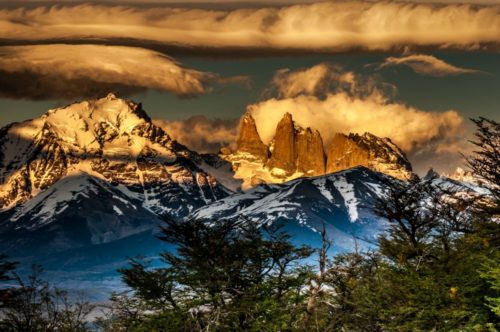
- Itinerary
South America’s Patagonian Highlights
Glaciers in El Calafate, mountains in Torres del Paine, sophistication in Buenos Aires & Santiago
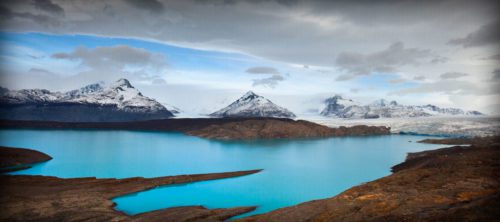
- Itinerary
Adventurous Argentina & Chile
Glaciers, Lakes and Peaks Of Patagonia
Keep reading about Patagonia

Which Side of Patagonia to Travel to? Expert Tips to Guide Your Choice
Encompassing 260,000 square miles, Patagonia is a vast region of awe-inspiring mountains,…
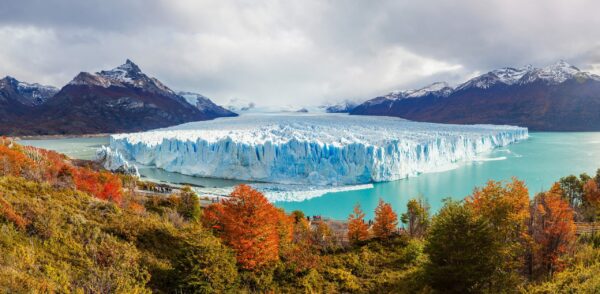
The Best Hikes in South America
Are you ready for the hike of a lifetime? Check out our top picks for the best hiking in…
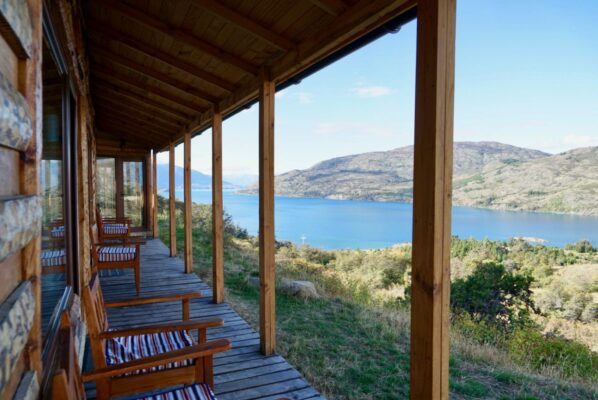
The Best Ecolodges in Chile’s Aysén Region
Whether it’s through investing in conservation initiatives, operating with a light…
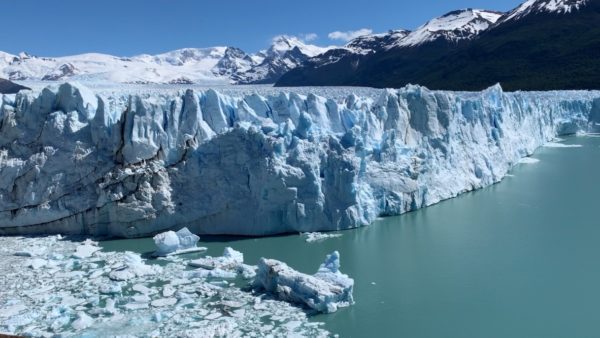
Southern Patagonia: What You Need to Know Before You Go
Discover 7+ reasons why Southern Patagonia’s stunning landscapes and active adventures…
Plan your Trip
Ready to start planning your own incredible adventure? We make the process stress-free and enjoyable.









